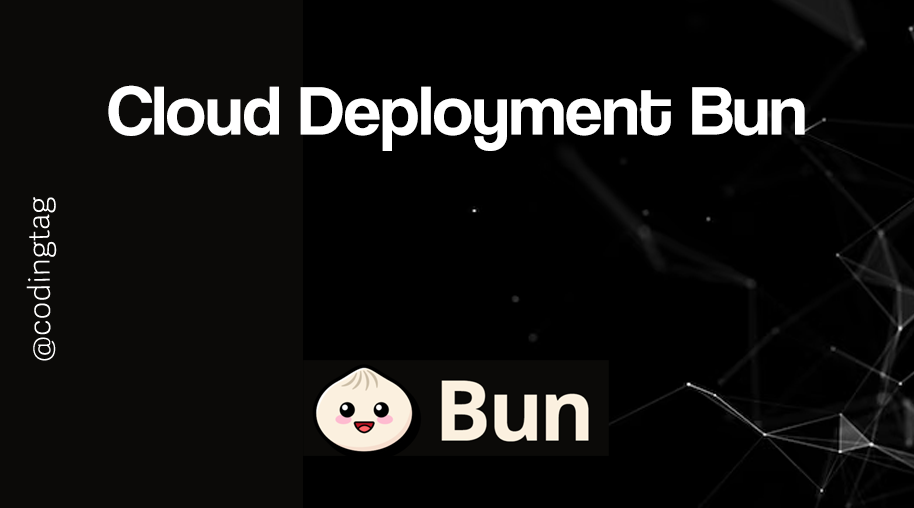Deploy Bun Apps
0 1337
🚀 Introduction to Deploying Bun Apps
Bun has taken the JavaScript world by storm with its speed and simplicity. But writing a fast app is only half the battle — the other half is getting it live.
In this tutorial, we’ll walk you through various ways to deploy your Bun apps, whether you're using a VPS, Docker, or edge functions.
🧰 Prerequisites
Before deploying, make sure you’ve done the following:
- ✅ Installed
Bunglobally on your development machine - ✅ Your app is working locally via
bun runorbun dev - ✅ GitHub repo (optional but helpful)
📁 Directory Structure Example
my-bun-app/
├── bun.lockb
├── index.ts
├── package.json
├── tsconfig.json
└── public/
This is a standard structure. Your entry point (like index.ts) is what you’ll run during deployment.
🌐 Deploying to a Linux VPS
If you're deploying on a VPS (like DigitalOcean, Hetzner, or AWS EC2), follow these steps:
# Step 1: SSH into your server
ssh user@your-server-ip
# Step 2: Install Bun on the server
curl -fsSL https://bun.sh/install | bash
# Step 3: Clone your repo or upload files
git clone https://github.com/your-user/my-bun-app.git
cd my-bun-app
# Step 4: Install dependencies
bun install
# Step 5: Start the app
bun index.ts
For production, use pm2 or a systemd service to keep the app running even after disconnection or crashes.
🐳 Dockerize Your Bun App
Want portability? Let’s containerize it using Docker.
# Dockerfile
FROM oven/bun
WORKDIR /app
COPY . .
RUN bun install
CMD ["bun", "index.ts"]
# Build and run
docker build -t my-bun-app .
docker run -p 3000:3000 my-bun-app
This is especially useful for CI/CD pipelines, microservices, or scaling on Kubernetes.
⚙️ Deploying with Bun Serve
If you’re using Bun.serve() to run an HTTP server, make sure the port is exposed correctly:
// index.ts
Bun.serve({
port: 3000,
fetch(req) {
return new Response("🧡 Hello from Bun!");
}
});
When hosted, this will be accessible at http://your-domain.com:3000.
🌍 Reverse Proxy with NGINX
Use NGINX as a reverse proxy to route requests to your Bun server.
Example config:
# /etc/nginx/sites-available/my-bun-app
server {
listen 80;
server_name your-domain.com;
location / {
proxy_pass http://localhost:3000;
proxy_http_version 1.1;
proxy_set_header Upgrade $http_upgrade;
proxy_set_header Connection 'upgrade';
proxy_set_header Host $host;
proxy_cache_bypass $http_upgrade;
}
}
Reload NGINX and you’re live:
sudo systemctl reload nginx
⚡ Edge Deployment with Vercel (Experimental)
Bun is not natively supported by Vercel (as of now), but you can deploy Bun-written logic via edge functions using adapters like hono or compile Bun apps to WASM in the future.
Stay tuned — this is evolving fast!
🔄 Setting Up Auto-Deploy with GitHub Actions
Want to deploy automatically when you push code?
Set up a GitHub Actions workflow:
# .github/workflows/deploy.yml
name: Deploy Bun App
on:
push:
branches: [ "main" ]
jobs:
deploy:
runs-on: ubuntu-latest
steps:
- uses: actions/checkout@v3
- name: Install Bun
run: curl -fsSL https://bun.sh/install | bash
- name: Install dependencies
run: bun install
- name: Run app (for testing)
run: bun index.ts
For production deployments, combine this with SSH or Docker push to remote.
✅ Final Thoughts
Deploying Bun apps is straightforward, thanks to its simplicity and speed. Whether you're using a basic VPS setup, containerizing with Docker, or testing edge deployments, Bun keeps the dev experience fast and modern.
As the ecosystem grows, we expect more native support from cloud providers. Until then — keep hacking, keep deploying, and let Bun cook! 🍳🔥
If you’re passionate about building a successful blogging website, check out this helpful guide at Coding Tag – How to Start a Successful Blog. It offers practical steps and expert tips to kickstart your blogging journey!
For dedicated UPSC exam preparation, we highly recommend visiting www.iasmania.com. It offers well-structured resources, current affairs, and subject-wise notes tailored specifically for aspirants. Start your journey today!

Share:







Comments
Waiting for your comments